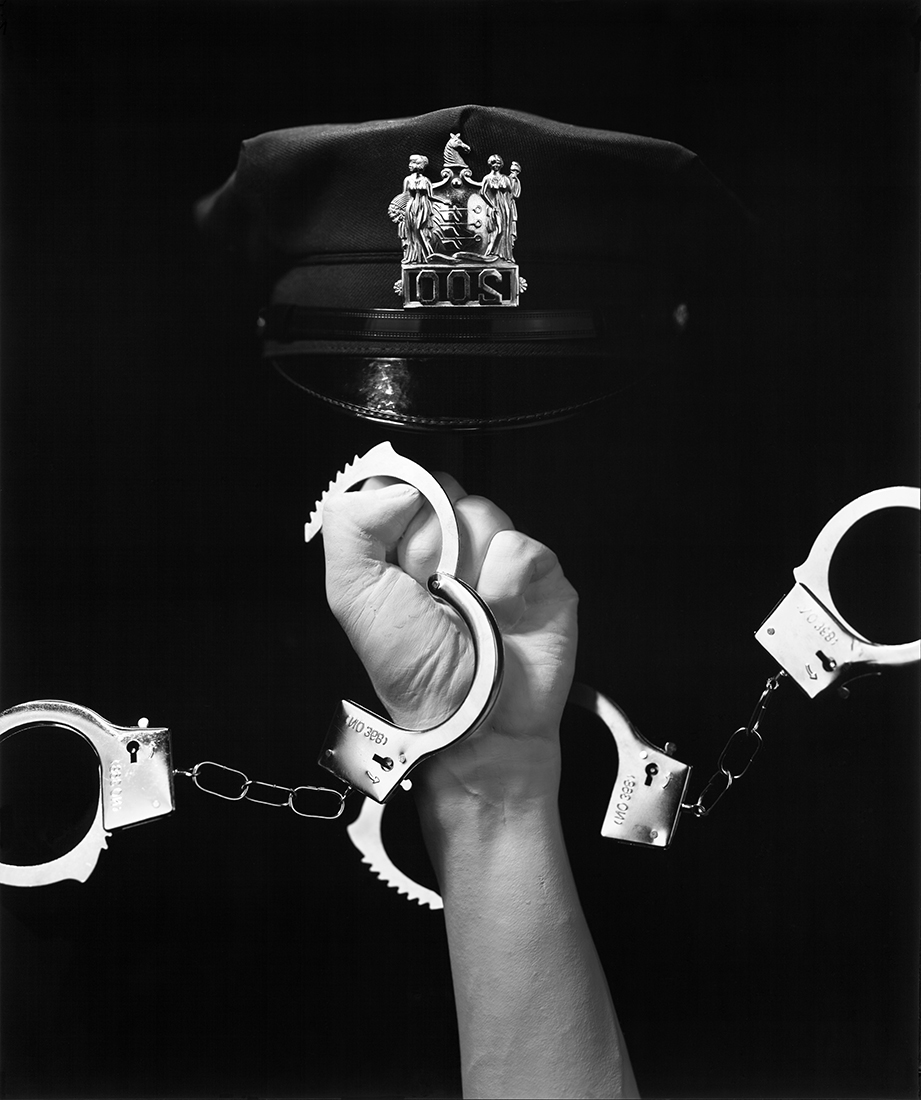Breonna Taylor, George Floyd, Jacob Blake...: Time and again, black people in the U.S. are killed or seriously injured by police violence. Since 2015, about 1000 people have been killed by security forces every year, that's what the Washington Post counted. Most of them were shot. Blacks are affected proportionally more often.
Direct exposure on black and white positive photo paper.
Camera type: Klimsch Praktika, Process / Reproduction Camera (Year of construction: 1957).
Lense: Rodenstock Klimsch Apo-Ronar 1:9 f=600mm
Camera Format: 24×24 Inch (60×60 cm)
Film Format: 20×24 Inch (50×60 cm)
professional category

Fist (Single)
DESCRIPTION
AUTHOR
Josef Dreisörner (born 1967)
Living in Munich, Germany
Mediadesigner, Photo Artist
When encountering the works of Josef Dreisörner, one discovers an artistic position in which conceptual creativity is combined with craftsmanship. Just as the act of creating a picture is an active process, so is the process that his pictures set in motion in the eye of the beholder. Seeing goes beyond simple representational recognition to become a productive process of perception. The themes of his works are immediately recognizable and immediately understandable even without a legend, as his pictures tell a clear story that is open to interpretation.
His KLIMSCH UNIKAT portrait shots yield perspectives of the human visage with downright surgical precision. In most of his still lifes, his concern as an artist is to draw the viewer's attention to socially relevant issues. Such pictorial statements are mainly realized by so-called large format cameras. Of particular note is the Klimsch Praktika reproduction / process camera built in 1957 with a film format of up to 50×60 cm (20×24 Inch). Photographs are taken analogue on black-and-white film or with direct exposure on black-and-white positive photo paper. The captures on film are realized by means of the Palladium /Platinum Print
Living in Munich, Germany
Mediadesigner, Photo Artist
When encountering the works of Josef Dreisörner, one discovers an artistic position in which conceptual creativity is combined with craftsmanship. Just as the act of creating a picture is an active process, so is the process that his pictures set in motion in the eye of the beholder. Seeing goes beyond simple representational recognition to become a productive process of perception. The themes of his works are immediately recognizable and immediately understandable even without a legend, as his pictures tell a clear story that is open to interpretation.
His KLIMSCH UNIKAT portrait shots yield perspectives of the human visage with downright surgical precision. In most of his still lifes, his concern as an artist is to draw the viewer's attention to socially relevant issues. Such pictorial statements are mainly realized by so-called large format cameras. Of particular note is the Klimsch Praktika reproduction / process camera built in 1957 with a film format of up to 50×60 cm (20×24 Inch). Photographs are taken analogue on black-and-white film or with direct exposure on black-and-white positive photo paper. The captures on film are realized by means of the Palladium /Platinum Print
back to gallery


